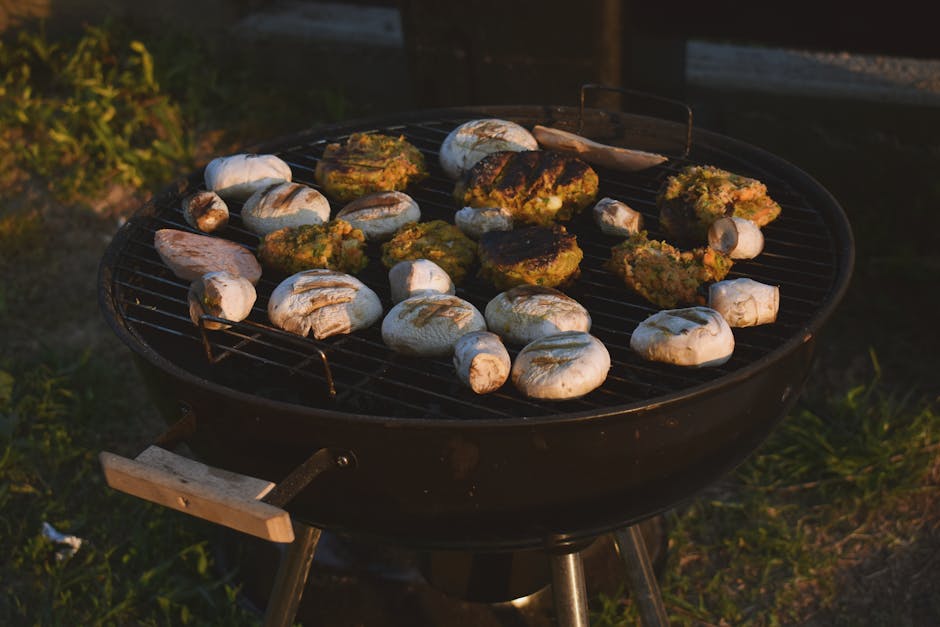The humble portobello mushroom, a culinary star in its own right, boasts a surprisingly rich history and global presence. While its exact origins are difficult to pinpoint with certainty, the portobello is essentially a mature crimini mushroom (Agaricus bisporus), a species cultivated for centuries. Ancient Romans and Greeks enjoyed fungi, though whether they specifically cultivated A. bisporus remains debated. What is clear is that the cultivation of different Agaricus species, including the ancestors of the crimini and portobello, gained significant momentum in Europe during the Middle Ages and beyond. Its popularity spread alongside other agricultural advancements, marking a shift towards more controlled and intensive farming practices.
The term portobello itself is more recent, gaining traction in the latter half of the 20th century, primarily in the United States. Its name is thought to be derived from Portobello, a region in Italy known for its rich culinary heritage, lending an air of sophistication to this robust fungus. However, there’s no definitive historical link establishing its cultivation or specific association with this Italian region. Regardless of its naming origins, the portobello’s rise to stardom in modern cuisine is undeniable. Its meaty texture and ability to absorb flavors have made it a favorite amongst both professional chefs and home cooks alike. The global mushroom market, including portobellos, is a multi-billion dollar industry, highlighting the widespread appreciation for this versatile ingredient.
Beyond its culinary applications, the portobello holds a certain cultural significance. In many vegetarian and vegan communities, the portobello mushroom serves as a hearty and satisfying meat substitute, particularly when grilled, its texture becoming intensely savory and smoky. This substitution speaks to the increasingly diverse culinary landscape and the growing demand for plant-based alternatives. Furthermore, the portobello’s adaptability allows it to feature prominently in various cuisines worldwide. From classic Italian dishes to Asian-inspired stir-fries and modern American barbecue, its versatility is a testament to its enduring appeal. Statistics show that mushroom consumption is globally on the rise, driven by factors including health consciousness (mushrooms are a good source of vitamins and minerals) and their environmental sustainability compared to some meat alternatives. The perfect grilled portobello mushroom, therefore, represents not just a delicious meal, but also a culmination of history, culture, and modern culinary trends.
Ingredients and Measurements
The success of perfectly grilled portobello mushrooms hinges on selecting high-quality ingredients and measuring them accurately. This section details the ingredients needed for a mouthwatering dish, along with precise measurements and helpful tips for optimal results.
Portobello Mushrooms: You’ll need 4 large portobello mushrooms (about 6-8 ounces each). Look for mushrooms with wide, firm caps and stems that are not overly bruised or slimy. Avoid mushrooms with dark spots or blemishes. The size is crucial; larger mushrooms offer a more substantial grilling experience. If you can’t find large ones, you can use several smaller mushrooms, adjusting cooking time accordingly.
Olive Oil: Use 2 tablespoons of high-quality extra virgin olive oil. This oil adds flavor and helps prevent the mushrooms from sticking to the grill. Don’t skimp on the olive oil; it’s essential for both flavor and moisture retention. A good quality olive oil will significantly enhance the taste of your grilled mushrooms.
Garlic: 2 cloves of fresh garlic, minced finely. Fresh garlic provides a much brighter and more intense flavor than powdered garlic. If you don’t have fresh garlic, use 1/2 teaspoon of garlic powder as a substitute, but be aware that the flavor profile will be slightly different.
Balsamic Glaze: 2 tablespoons of high-quality balsamic glaze. This adds a touch of sweetness and acidity that perfectly complements the earthy flavor of the portobellos. Look for a thick, syrupy glaze; thinner glazes may burn on the grill. You can easily make your own balsamic glaze by simmering balsamic vinegar until it reduces and thickens.
Fresh Herbs: 1 tablespoon of fresh herbs, chopped. We recommend a combination of fresh rosemary and thyme. The earthy notes of these herbs pair wonderfully with the mushrooms. Alternatively, you can use 1 teaspoon of dried herbs, but use a lighter hand as dried herbs are more concentrated in flavor. Experiment with other herbs like oregano or parsley for a unique flavor profile.
Salt and Black Pepper: 1 teaspoon of sea salt and 1/2 teaspoon of freshly ground black pepper. Season generously; the mushrooms can absorb a lot of seasoning. Using freshly ground pepper will provide a more robust and flavorful pepper taste compared to pre-ground pepper.
Optional Additions: For extra flavor, consider adding other ingredients such as a sprinkle of red pepper flakes for a hint of heat, or a squeeze of lemon juice after grilling for a burst of freshness. Experiment with different flavor combinations to find your perfect grilled portobello mushroom recipe. Remember to adjust the quantities based on your preferences and the number of servings.
Accurate Measurement is Key: While some recipes allow for flexible measurements, for optimal results, it’s recommended to use a kitchen scale for weighing ingredients, especially the mushrooms. This ensures consistent results every time you make this dish.
Equipment List
Grilling portobello mushrooms to perfection requires the right tools. While you can improvise, having the correct equipment ensures even cooking and enhances the overall flavor and texture. This list details the essential and recommended equipment, with explanations to help you achieve the best results.
Grill: The heart of this recipe! You’ll need a grill, whether it’s charcoal, gas, or even a high-quality grill pan for indoor use. Charcoal grills offer a smoky flavor that complements the mushrooms beautifully, but require more preparation and temperature control. Gas grills provide easier temperature regulation and quicker heat-up times. Grill pans are a great alternative for those without outdoor grilling space, allowing you to achieve similar grill marks indoors. Regardless of your choice, ensure your grill is clean before starting. A lightly oiled grilling surface prevents sticking.
Grill Brush: Essential for cleaning your grill grates before and after use. A stiff-bristled brush is ideal for removing stubborn food residue and ensuring a clean grilling surface. Regular cleaning prevents cross-contamination of flavors and ensures even heat distribution.
Tongs: You’ll need sturdy tongs to safely maneuver the large portobello mushrooms on the hot grill. Long-handled tongs, at least 12 inches, are recommended to keep your hands at a safe distance from the heat. Look for tongs with a good grip to ensure you have a secure hold on the mushrooms.
Basting Brush: A basting brush is crucial for applying the marinade or glaze evenly across the mushroom caps. A silicone basting brush is preferred as it is heat-resistant and easy to clean. A natural bristle brush can be used but needs careful handling to avoid damage from the heat.
Measuring Cups and Spoons: Accurate measurements are key for achieving the desired flavor balance in the marinade. A set of standard measuring cups and spoons is essential for precisely measuring the ingredients. Using a kitchen scale can also improve accuracy, especially for ingredients like oil and balsamic vinegar.
Mixing Bowls: You’ll need at least one medium-sized mixing bowl to prepare the marinade. A larger bowl might be helpful if you’re marinating multiple batches of mushrooms. Stainless steel or glass bowls are best for marinades, as they don’t react with the ingredients.
Cutting Board and Knife: A sturdy cutting board and a sharp knife are essential for cleaning and preparing the portobello mushrooms. A chef’s knife is ideal for removing the stems and cleaning the mushroom caps. Always use a clean cutting board to prevent cross-contamination.
Optional Equipment: While not strictly necessary, some additional equipment can enhance your grilling experience. A meat thermometer ensures the mushrooms reach the desired internal temperature. Aluminum foil can be used to create a makeshift grill basket for smaller mushrooms or to prevent them from falling through the grates. Gloves are recommended to protect your hands from heat when handling hot equipment.
Cleaning Supplies: Remember to have appropriate cleaning supplies readily available. This includes a grill brush, dish soap, and sponges or cloths for cleaning the grill, tools, and any other equipment used during the process. Proper cleaning is vital to maintain the longevity of your equipment and ensure food safety.
Preparation of Portobellos
Preparing portobello mushrooms for grilling is crucial for achieving that perfect, tender, and flavorful result. This involves cleaning, trimming, and optionally marinating the mushrooms to enhance their taste and texture. Begin by selecting large, firm portobello mushrooms with open caps; these will grill best and hold their shape. Aim for mushrooms that are roughly 4-6 inches in diameter for optimal grilling.
Cleaning the Mushrooms: Gently wipe the portobello caps with a damp cloth or paper towel. Avoid rinsing them under running water, as they are highly absorbent and will become waterlogged, leading to soggy results on the grill. If there’s significant dirt, use a soft brush to remove it. For stubborn debris, you can carefully scrape it off with a dull knife. Never soak the mushrooms.
Trimming the Stems: The stems of portobello mushrooms are typically quite tough and fibrous. Remove them completely by twisting and pulling them out gently. You can also use a sharp knife to cut them off close to the cap. Leaving the stems on will result in uneven cooking and a less appealing texture.
Removing the Gills (Optional): While not strictly necessary, removing the dark gills from the underside of the cap can improve the aesthetic appeal and prevent them from burning excessively on the grill. Use a spoon to carefully scrape away the gills. This is especially helpful if you are planning to stuff the mushrooms, as it provides a cleaner surface for your filling. If you choose to leave the gills on, be sure to monitor them closely during grilling to avoid burning.
Marinating (Recommended): Marinating the portobellos enhances their flavor and adds moisture, resulting in a more succulent final product. A simple marinade can be made with 2 tablespoons of olive oil, 1 tablespoon of balsamic vinegar, 1 teaspoon of garlic powder, 1/2 teaspoon of dried oregano, salt, and freshly ground black pepper to taste. Place the cleaned and trimmed portobellos in a shallow dish, pour the marinade over them, ensuring they are evenly coated. Cover the dish and refrigerate for at least 30 minutes, or up to 2 hours for optimal flavor absorption. Longer marinating times may result in overly soft mushrooms.
Preparing for Grilling: Before placing the mushrooms on the grill, ensure they are patted dry with paper towels. Excess moisture will hinder proper grilling and can lead to steaming instead of searing. Removing excess moisture is key for achieving those beautiful grill marks. Once dry, they are ready to be placed directly on the preheated grill grates, cap-side down, for the best results.
Following these steps will guarantee your portobellos are perfectly prepared for a delicious grilling experience. Remember to adjust seasoning and marinades to your personal taste preferences for a truly unique dish.
Marinade/Brine (if using)
While perfectly grilled portobello mushrooms are delicious on their own, marinades and brines can elevate their flavor and texture significantly. Using a marinade or brine isn’t strictly necessary, but it’s highly recommended, especially for larger mushrooms or those that might be slightly tough. The liquid helps tenderize the mushrooms and infuse them with deep, savory flavors.
Choosing between a Marinade and a Brine: Marinades are generally oil-based and work best for adding flavor and a slightly glazed finish. Brines, on the other hand, are water-based and are better for tenderizing and adding a more intense, salty flavor. For portobellos, a marinade is often preferred for its ability to create a richer, more flavorful exterior without making the mushrooms overly soggy.
Basic Marinade Recipe (serves 4): This recipe provides a versatile base that you can easily customize to your taste. Combine the following ingredients in a shallow dish large enough to hold the mushrooms:
- 1/4 cup extra virgin olive oil
- 2 tablespoons balsamic vinegar
- 1 tablespoon soy sauce (or tamari for gluten-free)
- 1 tablespoon Worcestershire sauce
- 1 teaspoon Dijon mustard
- 2 cloves garlic, minced
- 1/2 teaspoon dried oregano
- 1/4 teaspoon black pepper
Instructions for Marinating: Clean and trim your portobello mushrooms, removing the stems and gills. Place the mushrooms in the marinade, ensuring they are coated evenly. For optimal flavor, marinate for at least 30 minutes, but preferably 1-2 hours in the refrigerator. Marinating for longer periods is fine, but anything beyond 4 hours can result in overly soft mushrooms.
Brine Recipe (serves 4): If you prefer a brine, try this recipe: Combine 1 cup of water, 2 tablespoons of kosher salt, 1 tablespoon of brown sugar, and 1 tablespoon of your favorite herbs (rosemary, thyme, or a combination work well) in a saucepan. Bring to a simmer until the salt and sugar dissolve completely. Allow to cool completely before adding the mushrooms. Submerge the mushrooms entirely in the brine and refrigerate for at least 2 hours, but no more than 4. This method produces incredibly tender mushrooms.
Customizing Your Marinade/Brine: Feel free to experiment with different ingredients to create your perfect flavor profile. Consider adding:
- Sweetness: Honey, maple syrup, or agave nectar.
- Spice: Red pepper flakes, cayenne pepper, or a dash of hot sauce.
- Herbs: Fresh rosemary, thyme, parsley, or chives.
- Citrus: Lemon or lime juice.
Important Note: When grilling marinated or brined mushrooms, remove them from the marinade/brine and pat them dry with paper towels before grilling. This prevents excess moisture from steaming the mushrooms instead of grilling them, leading to a better sear and texture.
Grilling Techniques for Perfect Portobello Mushrooms
Grilling portobello mushrooms brings out their earthy flavor and creates a delightful smoky char. To achieve perfectly grilled portobellos, mastering a few key techniques is essential. This section will guide you through the process, from preparation to achieving that ideal grill mark.
Preparation is Key: Begin by selecting large, firm portobello mushrooms with open caps. Remove the stems completely, and gently scrape out the dark gills with a spoon. This prevents bitterness and allows for even cooking. Do not wash the mushrooms; simply wipe them clean with a damp cloth or paper towel. Excess moisture will cause them to steam instead of grill.
Marinades and Flavor Boosters: Marinating your portobellos before grilling enhances their flavor profile significantly. A simple marinade could consist of 2 tablespoons of olive oil, 1 tablespoon of balsamic vinegar, 1 teaspoon of garlic powder, 1/2 teaspoon of dried oregano, salt, and pepper to taste. Let the mushrooms marinate for at least 30 minutes, or up to 2 hours in the refrigerator. For a more robust flavor, try adding soy sauce, Worcestershire sauce, or a touch of honey to your marinade. Experiment with different herbs and spices to find your favorite combination.
Grilling Methods: There are two primary ways to grill portobellos: directly over the heat or indirectly. Direct grilling is ideal for achieving those beautiful grill marks and a slightly charred exterior. Preheat your grill to medium-high heat (around 375-400°F). Place the mushrooms cap-side down on the hot grates. Grill for approximately 4-5 minutes, until you see nice grill marks forming. Then, flip them and grill for another 3-4 minutes, depending on the thickness of the mushrooms. Indirect grilling is best for larger mushrooms or if you prefer a more evenly cooked mushroom without intense charring. For indirect grilling, preheat your grill, then move the mushrooms to a cooler area of the grill, away from the direct flames. Cover the grill and cook for 8-10 minutes, flipping halfway through. Use a meat thermometer to check for doneness; the internal temperature should reach 160-170°F.
Avoiding Sticking: To prevent the mushrooms from sticking to the grill grates, lightly oil the grates with a high-heat oil like canola or grapeseed oil before placing the mushrooms on. Avoid using olive oil, as it has a lower smoke point. You can also lightly oil the mushroom caps themselves for added protection. Using a grill basket can also help prevent sticking and make flipping easier.
Doneness and Serving: The mushrooms are done when they are tender and have a nice char on the outside. They should easily yield to gentle pressure. Overcooked mushrooms will become tough and rubbery. Serve immediately, topping with your favorite grilled vegetables, cheeses, or sauces. They are delicious on their own, in burgers, or as part of a larger grilled meal.
Professional Tip: For extra flavor and texture, brush the mushrooms with a little extra virgin olive oil during the last minute or two of grilling. This will help to enhance the browning and create a glossy finish.
Cooking Time and Doneness
Grilling portobello mushrooms to perfection requires careful attention to cooking time and achieving the desired doneness. The size of your mushrooms will significantly impact the cooking time, as will the heat of your grill. Larger mushrooms (over 6 inches in diameter) will naturally require longer cooking times than smaller ones.
Preparation is key. Before grilling, ensure your portobello mushrooms are thoroughly cleaned. Wipe them with a damp cloth or use a mushroom brush to remove any dirt or debris. Larger mushrooms may benefit from having their stems removed and gills scraped to prevent overly soggy results. You can also lightly brush them with olive oil to prevent sticking to the grill grates.
For medium-sized portobello mushrooms (4-6 inches in diameter), aim for a grilling time of approximately 8-12 minutes per side over medium heat. This translates to a total grilling time of 16-24 minutes. Medium heat is crucial; high heat can burn the mushrooms before the inside is cooked through, while low heat will result in mushy, undercooked mushrooms.
To determine doneness, look for several key indicators. The mushrooms should have softened considerably, exhibiting a noticeable decrease in firmness. The caps should be tender and slightly yielding to gentle pressure. Their color will also change, deepening to a rich, dark brown, almost mahogany hue. The gills will have darkened as well.
For larger mushrooms (over 6 inches), increase the cooking time by approximately 2-4 minutes per side. It’s best to monitor them closely, adjusting the cooking time as needed. You may need to increase the cooking time if the mushrooms are particularly thick. Using a meat thermometer can be helpful; aim for an internal temperature of 165°F (74°C) for food safety.
For smaller mushrooms (under 4 inches), reduce the cooking time by approximately 2-4 minutes per side. These will cook much faster than larger ones, so keep a close eye on them to avoid burning. It’s easy to overcook smaller mushrooms, so it’s better to err on the side of slightly undercooked than burnt.
Professional Tip: To achieve even cooking, consider rotating the mushrooms every 3-4 minutes. This ensures that all sides receive adequate heat and prevents uneven browning or burning. If using a gas grill, you may need to adjust the burners to create zones of higher and lower heat for better control.
Don’t be afraid to experiment. The ideal cooking time will vary slightly depending on your grill, the type of mushrooms, and your personal preference for doneness. Start with the recommended times and adjust as needed. Practice makes perfect, and soon you’ll be grilling perfect portobello mushrooms every time.
Overcooked portobello mushrooms will be dry and tough, while undercooked ones will be watery and lack flavor. Aim for that perfect balance of tenderness and rich flavor – the hallmark of a truly delicious grilled portobello mushroom.
Perfect Grilled Portobello Mushrooms: Recommendations
To achieve truly perfect grilled portobello mushrooms, several key steps should be followed. Firstly, selecting the right mushrooms is crucial. Look for large, firm portobellos with open caps and no signs of bruising or spoilage. Their size ensures a satisfyingly meaty texture after grilling. Before grilling, gently clean the mushrooms with a damp cloth or brush, avoiding soaking them, as this can make them soggy. Removing the stems is optional, depending on your preference; some find the stems add a pleasant earthy flavor and texture.
Grilling technique significantly impacts the final result. High heat is ideal for creating beautiful grill marks and a tender, yet slightly charred exterior. Lightly oil the grill grates to prevent sticking and brush the mushroom caps with olive oil, balsamic vinegar, or a marinade of your choice. Grill for approximately 4-6 minutes per side, or until tender and slightly charred. Use tongs to carefully turn the mushrooms; avoid piercing them with a fork, as this can lead to moisture loss.
Serving suggestions are abundant and versatile. These grilled portobellos make a fantastic vegetarian main course, especially when stuffed with flavorful fillings like herbed goat cheese, sautéed vegetables, or a creamy spinach and artichoke mixture. They also serve exceptionally well as a side dish, complementing grilled meats, fish, or poultry. Consider slicing them and adding them to salads for a rich, earthy element, or use them as a base for gourmet burgers, replacing the traditional beef patty.
Storage is important to maintain freshness and quality. Allow the grilled mushrooms to cool completely before storing them. They can be stored in an airtight container in the refrigerator for up to 3 days. For longer storage, consider freezing them. Freezing will slightly alter the texture but will preserve their flavor for up to 3 months. Before freezing, ensure they are completely cooled and packed tightly to prevent freezer burn.
Complementary dishes perfectly enhance the flavor profile of grilled portobellos. Consider serving them with a side of roasted vegetables like asparagus or zucchini, or a vibrant quinoa salad. A simple balsamic glaze drizzled over the mushrooms adds a touch of sweetness and acidity, while a sprinkle of fresh herbs like parsley or thyme elevates their aroma. Pairing them with a robust red wine, such as a Cabernet Sauvignon, further complements their earthy notes.
Nutritional Information (per 1 large portobello mushroom, approximately): Calories: 150-200 (depending on preparation), Protein: 7-10g, Fiber: 6-8g. Portobellos are a good source of several vitamins and minerals, including vitamin B, potassium, and selenium. Note: Nutritional values are approximate and may vary depending on the size of the mushroom and added ingredients.





